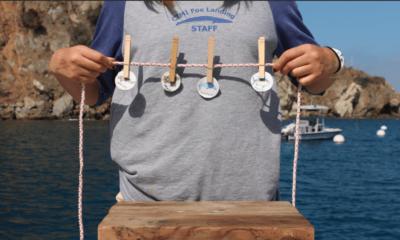
 Imagine that you are fishing, and looking to catch only one type offish. You are at a dock and decide to take a break and walk away from your pole for an hour. Upon your return, your pole has caught one of the intended fish, but also 10 other types of fish that you did not mean to catch, and do not have any use for. Essentially, those 10 others are wasted because you have no use for them, but in your fishing efforts you did succeed because you caught 1 fish that you intended to. Does this seem like a sustainable way to catch that one fish? We refer to those 10 other unintended fish as non-target species, or bycatch, the amount of marine life caught within commercial fishing gear that are unintentionally caught and thus wasted.
Imagine that you are fishing, and looking to catch only one type offish. You are at a dock and decide to take a break and walk away from your pole for an hour. Upon your return, your pole has caught one of the intended fish, but also 10 other types of fish that you did not mean to catch, and do not have any use for. Essentially, those 10 others are wasted because you have no use for them, but in your fishing efforts you did succeed because you caught 1 fish that you intended to. Does this seem like a sustainable way to catch that one fish? We refer to those 10 other unintended fish as non-target species, or bycatch, the amount of marine life caught within commercial fishing gear that are unintentionally caught and thus wasted.
The seafood industry is unique as it is one of the only areas where we still commercially harvest stock entirely from wild populations. Populations around the world rely on the ocean, a collectively shared wild resource, to provide main sources of sustenance to their diets. Every year, at least 7.3 million tons of marine life are caught unintentionally in fishing gear. Bycatch occurs regularly within the commercial fishing industry, and is very harmful to many marine species. Through unsustainable practices  like gill netting and long lining, fishermen will catch large numbers of marine life, and accidentally kill them for no monetary purpose. Frequently those caught are endangered species such as turtles, sharks, and marine mammals that cannot escape the fishing gear. Bycatch is also hard to monitor as most times these numbers go unreported, so it is very hard to regulate and truly understand the damage that it can do to entire species. It is also a complex issue, as modifying the nets to allow certain animals to escape may prove to be more harmful to a different species.
like gill netting and long lining, fishermen will catch large numbers of marine life, and accidentally kill them for no monetary purpose. Frequently those caught are endangered species such as turtles, sharks, and marine mammals that cannot escape the fishing gear. Bycatch is also hard to monitor as most times these numbers go unreported, so it is very hard to regulate and truly understand the damage that it can do to entire species. It is also a complex issue, as modifying the nets to allow certain animals to escape may prove to be more harmful to a different species.
Although finding a solution is difficult, scientists, fishermen, and conservationists alike are coming together to set better protection standards for these marine species. Some fishermen have agreed to switch to more selective gear, which can be a simple modification of a hook or net, but can result in saving the lives of thousands of creatures. For example, in certain areas nets have been made to incorporate turtle excluder devices (TEDs), which allow quick escape to turtles caught within the nets. By identifying practical solutions and working in unison with one another, fishing industry and environmentalists can work together to help preserve and protect endangered, non-target species in order to foster more successful fishing practices.
Written by: Nina Rush


